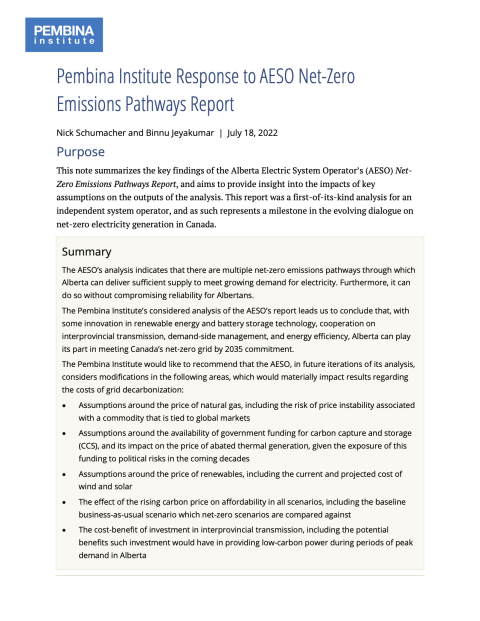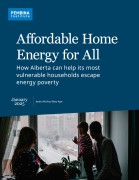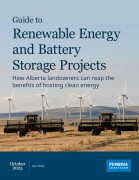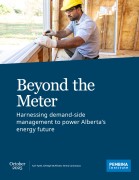On June 27, 2022, the Alberta Electric System Operator (AESO) released its Net-Zero Emissions Pathways Report. This report was a first-of-its-kind analysis for an independent system operator, and as such represents a milestone in the evolving dialogue on net-zero electricity generation in Canada. The Pembina Institute is grateful to have had the opportunity to provide feedback on the initial scope and assumptions of this important analysis. This note summarizes the key findings of the AESO’s report, and aims to provide insight into the impacts of key assumptions on the outputs of the analysis.
The AESO’s report analyzes the pathways by which Alberta’s electricity grid could reach net-zero greenhouse gas emissions by 2035, in line with the Government of Canada’s commitment for all electricity generation across the country. It provides further evidence that eliminating emissions from the electricity system is necessary to underpin the broader electrification and decarbonization of the Albertan and Canadian economy.
We look forward to further collaboration and engagement with the AESO as it incorporates this analysis into subsequent iterations of its Long-term Outlook (LTO) and Long-term Transmission Planning (LTP). In particular, we appreciate that the AESO recognizes this analysis is not intended to serve as a policy recommendation, but is instead intended to inform its own system forecasting and planning as well as allow for identification of future areas of research.
Summary
The AESO’s analysis indicates that there are multiple net-zero emissions pathways through which Alberta can deliver sufficient supply to meet growing demand for electricity. Furthermore, it can do so without compromising reliability for Albertans. The Pembina Institute’s considered analysis of the AESO’s report leads us to conclude that, with some innovation in renewable energy and battery storage technology, cooperation on interprovincial transmission, demand-side management, and energy efficiency, Alberta can play its part in meeting Canada’s net-zero grid by 2035 commitment. The Pembina Institute would like to recommend that the AESO, in future iterations of its analysis, considers modifications in the following areas, which would materially impact results regarding the costs of grid decarbonization:
- Assumptions around the price of natural gas, including the risk of price instability associated with a commodity that is tied to global markets
- Assumptions around the availability of government funding for carbon capture and storage (CCS), and its impact on the price of abated thermal generation, given the exposure of this funding to political risks in the coming decades
- Assumptions around the price of renewables, including the current and projected cost of wind and solar
- The effect of the rising carbon price on affordability in all scenarios, including the baseline business-as-usual scenario which net-zero scenarios are compared against
- The cost-benefit of investment in interprovincial transmission, including the potential benefits such investment would have in providing low-carbon power during periods of peak demand in Alberta









